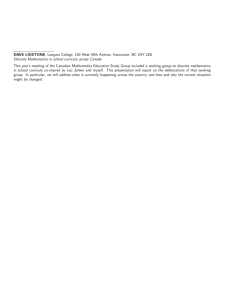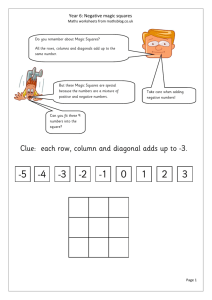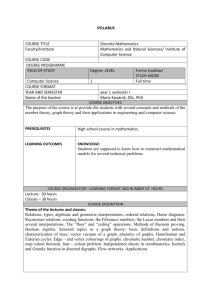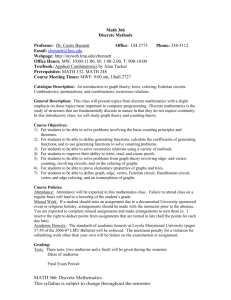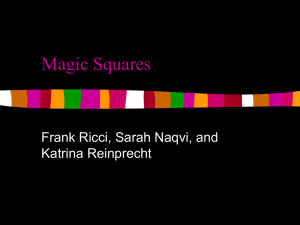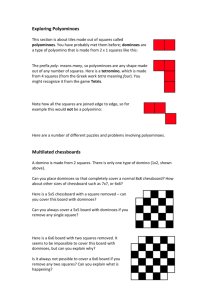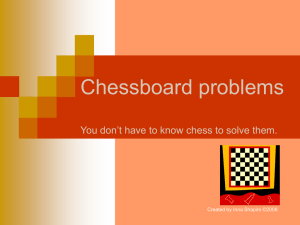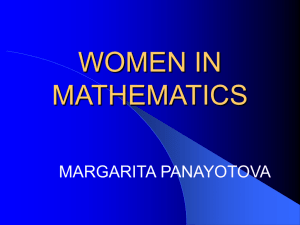Lecture 1
advertisement
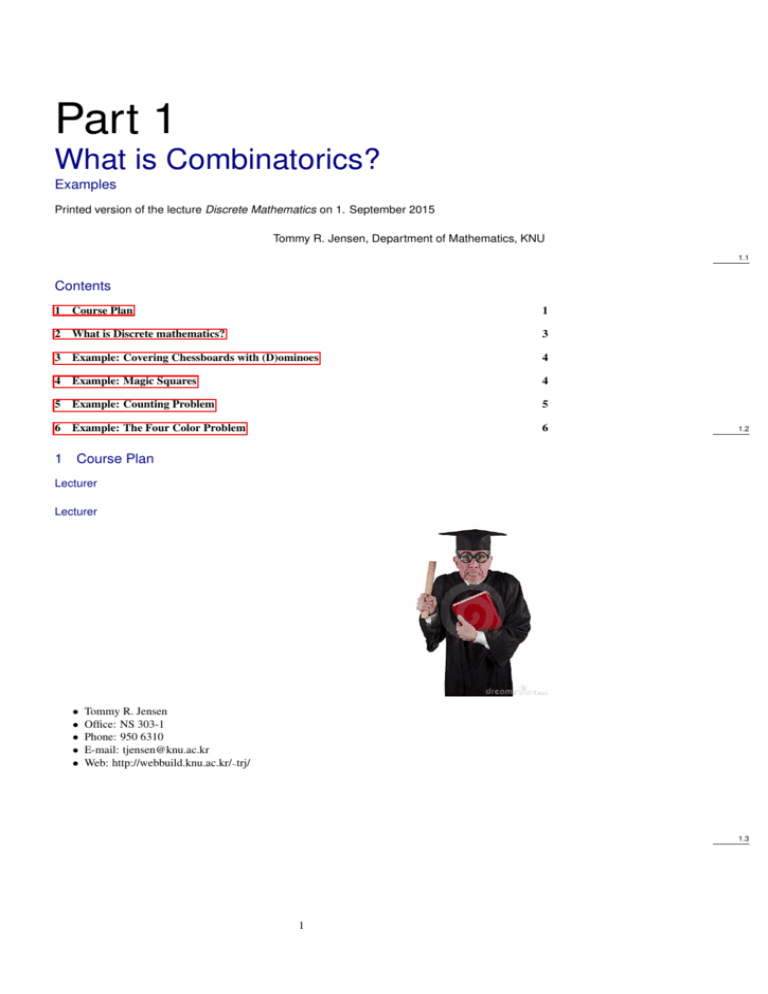
Part 1 What is Combinatorics? Examples Printed version of the lecture Discrete Mathematics on 1. September 2015 Tommy R. Jensen, Department of Mathematics, KNU 1.1 Contents 1 Course Plan 1 2 What is Discrete mathematics? 3 3 Example: Covering Chessboards with (D)ominoes 4 4 Example: Magic Squares 4 5 Example: Counting Problem 5 6 Example: The Four Color Problem 6 1 1.2 Course Plan Lecturer Lecturer • • • • • Tommy R. Jensen Office: NS 303-1 Phone: 950 6310 E-mail: tjensen@knu.ac.kr Web: http://webbuild.knu.ac.kr/∼trj/ 1.3 1 Time and place • • • • Sep 1 2015 - Dec 3 2015 Tuesday 9:00 - 10:15 Thursday 10:30 - 11:45 Room NS2 401 1.4 Textbook Introductory Combinatorics Richard A. Brualdi Pearson 2010 1.5 Homework 2 • Assigned on Thursday • Due on Tuesday the following week 1.6 Grading • 10% attendance/homework • 40% midterm exam • 50% final exam 1.7 What is Discrete Mathematics? 1.8 2 What is Discrete mathematics? What is Discrete Mathematics? It is: Logic, Set Theory, Information Theory, Number Theory, Combinatorics, Theoretical Computer Science, Operations Research, Discretization Theory. What is Combinatorics then? 3 Design Theory, Enumeration, Combinatorial Geometry and Topology, Graph Theory, Optimization. What is the aim of this course? To learn some methods. To gain experience and become clever. 1.9 3 Example: Covering Chessboards with (D)ominoes Example: Covering Chessboards with (D)ominoes If you have 32 dominoes, you can cover the 64 squares of the chessboard with them. 1.10 Example: Covering Chessboards with (D)ominoes If you have 31 dominoes, can you cover the 62 squares of the amputated chessboard with them? No! Because each domino covers one light and one dark square, but there are not equally many light and dark squares left after removal of the two opposite corners! 1.11 4 Example: Magic Squares Example: Magic Squares 4 3x3 and 4x4 The sum of all rows, columns and diagonals are the same: 15 and 34, respectively. 1.12 Example: Magic Cubes A magic 3x3x3 cube. But the diagonals of the squares do not always add up right: it is not perfect. 1.13 5 Example: Counting Problem Example: Counting Problem A cake with n straight sides can be cut into n − 2 triangular pieces using n − 3 cuts through corners of the cake: In the case n = 6 there are 14 different ways to do this. Is there a simple formula for the number of ways to cut the cake, as a function of n? The answer turns out to be given by the Catalan numbers: number of ways to cut = C(n − 2) = 5 1 2(n − 2) . n−1 n−2 1.14 6 Example: The Four Color Problem Example: The Four Color Problem Two four colored maps. 1.15 Can you four color this map? 1.16 Conclusion 6 This ends the first lecture! 1.17 Next time: More examples. 1.18 7

